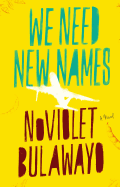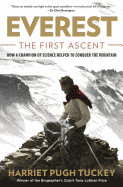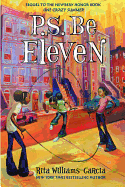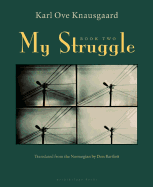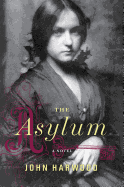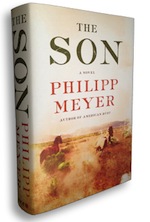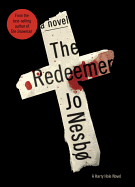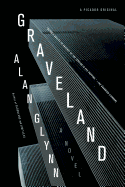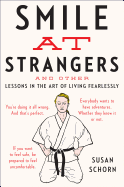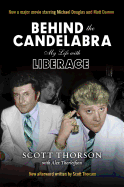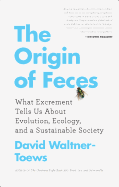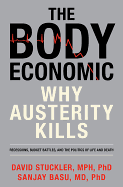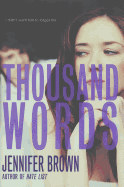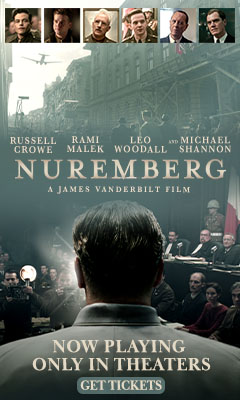Friday, May 31, 2013
What was a life anyway? An accumulation of small shelves of incident. Stacked at odd angles to each other. --from TransAtlantic by Colum McCann (Random House, June 4)
As you read this, I'll be wandering the crowded aisles at BookExpo America in New York City, surrounded by hundreds of authors and thousands of books. Anticipation of this scene, and Colum McCann's fine new book, prompted me to consider the ways in which writers and their readers sometimes meet. 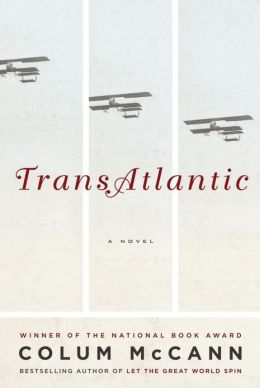
At that point, I'd been a bookseller (Northshire Bookstore, Manchester Center, Vt.) for a while and knew how easy it is to become jaded regarding author events. Yet I drove those snowy mountain roads across the state that night because I believed, as he recently told the Guardian, that "it's all about language, it's all about how you apply it to the page." And it is:
"I'm so god-damn cold y'all could skate me." (This Side of Brightness)
"Maybe silence has cured him of memory." (Songdogs)
"They were casting with ferocious hope...." (Fishing the Sloe-Black River)
I received a letter from Colum shortly afterward, thanking me for making the trek and concluding: "Regards to all up there and with the hope that sometime we get a chance to have a pint of Guinness together."
And so we did a couple of times, when one of those "small shelves of incident" brought Colum through Manchester. Although I haven't seen him for nearly a decade, our writer/reader conversation continues eloquently with TransAtlantic. Sláinte, Colum. Well-met, indeed. --Robert Gray, contributing editor, Shelf Awareness
We Need New Names
by Noviolet Bulawayo
They are Darling, Chipo, Godknows, Bastard, Sbho and Stina, and they are leaving Paradise for Budapest "even though we are not allowed to cross Mzilikazi Road, even though Bastard is supposed to be watching his little sister Fraction, even though Mother would kill me dead if she found out," Darling narrates. "There are guavas to steal in Budapest, and right now I'd rather die for guavas."
So begins We Need New Names, the outstanding debut novel by Zimbabwean writer NoViolet Bulawayo. The opening chapter ("Hitting Budapest"), which won Bulawayo the Caine Prize for African Writing in 2011, immediately pulls the reader into 10-year-old Darling's world, where "Paradise" is Darling's shantytown in Zimbabwe, and "Budapest" is the similarly incongruous name of a nearby wealthy neighborhood.
Darling and her friends have witnessed the destruction of their homes and schools by military thugs, the desperation of poverty and the flight of their fathers to mysterious jobs abroad that they don't always come home from (or, like Darling's father, they come home from with AIDS).
Darling dreams of escape to America, where her Aunt Fostalina lives (in "Destroyedmichygen"). Eventually, she leaves but quickly learns that the U.S. isn't paradise, either: "This place doesn't look like my America," Darling says of snowy, bleak Detroit. "It's like we're in a terrible story, like we're in the crazy parts of the Bible, where God is busy punishing people for their sins and is making them miserable with all the weather."
Though this is a story of loss, yearning and alienation, Bulawayo's prose is so striking and vivid (and Darling is such a disarmingly likable narrator) that We Need New Names feels ultimately hopeful. --Hannah Calkins, blogger at Unpunished Vice
Discover: Debut novelist NoViolet Bulawayo tells the vivid and acutely personal story of a young girl who sacrifices her home in Zimbabwe for a chance in the U.S.
My Struggle: Book Two: A Man in Love
by Karl Knausgaard, transl. by Don Bartlett
A Man in Love, the second book in Norwegian author Karl Ove Knausgaard's six-volume autobiographical novel My Struggle, stands on its own as a painfully honest examination of the emotional fluctuations in a marriage filled with the everyday squabbles and joys of a couple with three kids. Knausgaard delights in all the little disappointments and frustrations of reality. His specialty is chronicling the ordinary moments we don't think of as important in words so exact the images seem photo-real.
Most of the novel is in flashback, beginning in 2008, as Knausgaard completes its predecessor, then leaping back two years to trace his new life with his second wife, Linda. Determined to be a good person, Karl Ove is a shy, odd, occasionally cranky, genuinely likable narrator who is convinced he doesn't belong anywhere and longs only to write. He is in his mid-30s when he meets Linda; when she prefers his friend, he slashes his own face with broken glass in grief. She soon changes her mind, and he finds himself transplanted by love to Sweden, where Norwegians are considered just this side of wild men.
What makes this novel so compulsively readable? Very little happens; the "action" moments are dinner parties, husband-and-wife squabbles, encounters with the alcoholic Russian neighbor from hell and long philosophical conversations with his lifelong best friend. But watching Karl Ove doubt his own goodness, wrestle with and expose himself becomes the most intimate human experience. The reader engages with the mind of a thoughtful man who is honestly trying to capture the essence of his life in language, whose self-questioning becomes our own. --Nick DiMartino
Discover: The stand-alone second volume of Knausgaard's masterful examination of life explores the emotional fluctuations of a marriage with the complication of children.
The Asylum
by John Harwood
The Asylum is the third Victorian thriller from John Harwood (The Ghost Writer). The setting referred to in the title is not a madhouse in the strict sense of the term--Dr. Straker, the director, believes in treating patients humanely, with kindness and consideration. Indeed, part of the institution is for voluntary patients, rather like a spa in Baden-Baden. Do not be deceived, however, for things are not what they seem.
Georgina Ferrars awakes in a small room on the "voluntary" side of Tregannon House, a private asylum in a remote corner of England. She is disoriented, with no memory of the past several weeks. Dr. Straker tells her that she admitted herself as Lucy Ashton the day before and then suffered a seizure. Georgina insists she is not Lucy and Straker must send her uncle a telegram to clear this up. The reply comes back: Georgina is at home in London with the uncle; this other person "must be an imposter."
As Georgina tries everything she knows to prove her identity--even makes an escape attempt--she is caught up in a series of incidents that reek of betrayal and deception, long-held family secrets, a predisposition to madness and a set of "friends" who wish evil upon her. Through letters and journals unearthed from the hidden recesses of her luggage, however, a path toward truth emerges. Harwood holds the reader's interest by alternately letting us think that we are close to the solution, then pulling it away at the last second--a frustrating but very effective strategy. --Valerie Ryan, Cannon Beach Book Company, Ore.
Discover: A fearsome horror story of a young woman trying to prove she really is who she says she is--or is she?
The Son
by Philipp Meyer
In mid-19th century Texas, when Eli McCullough is 12, Comanches kill his family and take him captive. A generation later, Eli's son Peter rebels against his father after the latter orders the mass slaying of a family of Mexicans on the land adjacent to theirs. And 100 years after, Eli's granddaughter Jeannie McCullough, now 86 and a formidable businesswoman, lies prone on the floor of her parlor, wondering what has happened to her while slowly losing consciousness. These three narrative threads, taking place over a span of nearly two centuries, set the scene for The Son, a novel that is an epic in the truest sense of the word: massive in scope, replete with transformations in fortune and fate, and drenched in the blood of war.
Each viewpoint character is distinct in personality, with his or her own particular voice--though in what is probably deliberate choice on the part of the author, Eli and Jeannie show similarities in their toughness and will to survive. While the focus is on a single family, author Philipp Meyer (American Rust) uses these interlinked life stories to tell, in microcosm, the much larger story of the founding of Texas. As the balance of power shifts--with considerable carnage--among the Comanche tribe, the Spanish, and the Anglo settlers, so does the economic and environmental reality of the state, as cattle eventually give way to oil in the 20th century. Grasses that prior to European settlement were "balls high" vanish, chewed away by the cattle of the settlers, leaving a barren landscape. Meyer's vision of human habitation on land is irrevocably harsh, a thing that lays waste not only to people but to the land itself.
As the stories of three generations of McCulloughs intertwine, mysteries emerge: How did Eli, now known as the Colonel, go from ragged captive to wealthy cattleman? Why was Eli so eager to destroy the Garcias, the Mexican family that his son Peter wished to save? And how did Jeannie, a strong and independent woman even in her 80s, come to be lying on the floor of her home in a room that smells increasingly of gas? Gradually, but in the course of a swift-flying plot, Meyer unmasks the answers to these questions, which all turn out to be tied to one theme: the inexorability of history, no matter the players, and the unbreakable cycle of violence over centuries that is relentless as the tides.
Depictions of brutality in The Son, recounted without emotion, are exceptionally harrowing. Scenes of gang rape, dismemberment, massacre and torture are just graphic enough to leave a lasting impression in the mind--or perhaps a better word would be a scar. These horrific events serve as a constant reminder that Texas, and the United States as a whole, was forged in blood--that of the indigenous people and of the Europeans who settled there.
In that way it is no different from any other place, as Meyer frequently takes a long view of history and the central role of atrocities in it. At one point Jeannie thinks of her own place in history, "A man, a life--it was barely worth mentioning. The Visigoths had destroyed the Romans, and themselves been destroyed by the Muslims. Who were destroyed by the Spanish and Portuguese. You did not need Hitler to see that it was not a pleasant story. And yet here she was.... The blood that ran through history would fill every river and ocean, but despite all the butchery, here you were."
And here, by implication, we are. Eli McCullough is a creature of violence, yet without him his family would not have survived, would certainly not have become so wealthy from cattle-raising and later, from oil drilling. The moral complexity at the core of the novel is laid bare, raising ever more complicated dilemmas with each successive page. Every time the reader may tempted to judge the vicious actions of a character, that character is later revealed to be no more nor less than a human being. Thus any judgment cast upon that character must redound back, disquietingly, to ourselves.
Lush with historical detail, The Son is a vivid evocation of time, place... and the violence that lies at the heart of both the destruction and emergence of societies throughout history. --Ilana Teitelbaum
Mystery & Thriller
The Redeemer
by Jo Nesbø, transl. by Don Bartlett
It's the week before Christmas in Oslo. A group of people gathered to hear a Salvation Army concert are bewildered when a man walks up and shoots one of the band's officers point blank. Investigator Harry Hole and his team are fairly certain the shooter is a Croatian contract killer known as the Little Redeemer, but no one can figure out who ordered the hit or why he was sent to Oslo--the only thing that's clear is that this was a case of mistaken identity, and the real target is still alive. Unfortunately for the murderer, bad weather has grounded all flights, and he's stuck in Oslo, realizing he killed the wrong man. Can he rectify his error and kill the right one before Harry catches him?
Jo Nesbø's anti-heroic protagonist is up to his usual antics in The Redeemer, the sixth Harry Hole novel in the original Norwegian sequence but the seventh available to American readers in an English translation. Harry is struggling to stay sober, resentful of his new boss and determined to solve the case, no matter how many rules he has to break.
Nesbø depicts the motivations of both the "good guys" and the "bad guys" with nuance; flawed detectives and believable criminals are all just seeking some sort of redemption. Fans of other Scandinavian mystery authors like Stieg Larsson, Henning Mankell and Arnaldur Indridason will want to add Nesbø to their reading lists, if they haven't already. --Jessica Howard, blogger at Quirky Bookworm
Discover: A hit man is stalking a Salvation Army officer through Oslo in this twisted mystery, originally published in Norway in 2009.
Graveland
by Alan Glynn
In the anti-Wall Street rhetoric of the Great Recession, angry victims hollered for the heads of the financial tycoons responsible. Alan Glynn's Graveland starts when someone attempts to collect. First an investment banker is shot in the head while jogging in Central Park, then a hedge fund mogul is gunned down outside a Columbus Avenue restaurant. Sensing a story, ambitious investigative journalist Ellen Dorsey dives into an all-night Internet swim and finds a relevant post on a radical blog called Smells Like Victory: "I'd start with someone from each of the pillars of this rotten temple... just pick three institutions and pop the top guys."
Dorsey is afraid she'll get scooped by someone online, but when the cops report no suspects, she digs further and uncovers a trail of connections that extend to a small college near Albany before circling back to Manhattan's Lower East Side. Then things get complicated.
Glynn knows New York City--both its rich and its poor--and he clearly knows how to move a plot with many moving pieces. What sets him apart, however, is a flair for snappy character descriptions, like the sidewalk socialite with "because-she's-worth-it hair and a Jell-O-on-springs gait," or the huddle of college girls who "work their phones, foreheads all screwed up in concentration, fingers hopping and dancing like they're in some demented jazz ensemble." Graveland's timely plot and diverse characters almost make the recession entertaining. --Bruce Jacobs, founding partner, Watermark Books & Cafe, Wichita, Kan.
Discover: Glynn--an Edgar finalist for Bloodland--delivers a timely thriller about Wall Street killings and old school investigative journalism.
Biography & Memoir
Smile at Strangers: And Other Lessons in the Art of Living Fearlessly
by Susan Schorn
All her life, Susan Schorn had wrestled with fear and anxiety. When she took up karate at a women-only dojo in Austin, Tex., she discovered not only a way to address her fears and defend herself against potential attackers, but an entirely new framework for life. Amid learning complicated pose sequences, breaking boards and studying for multiple belt tests, Schorn also learned how to say no, set boundaries and face her fears. In the smart, witty Smile at Strangers, she shares the wisdom gained during 15 years in the dojo.
Each chapter is headed by a kowa, a pithy, often paradoxical statement inspired by the Zen tradition that undergirds karate. These pieces of advice--some traditional Japanese proverbs, some composed by Schorn--encapsulate the lessons she has learned from karate: "Fall down seven times, get up eight." "You're doing it all wrong. And that's perfect." "Everybody wants to have adventures. Whether they know it or not."
Schorn's adventures often take place in the realm of daily life: raising two children, remodeling a house, navigating the obstacle course of office politics. But karate also led her to take on previously unimagined challenges, such as teaching an impromptu self-defense workshop to a roomful of Girl Scout troop leaders, passing her double black belt test and eventually becoming a regular teacher at her dojo. Tracing her journey with wry humor, Schorn mixes personal anecdotes with practical self-defense tips and witty, relatable advice on pursuing a less fearful life. --Katie Noah Gibson, blogger at Cakes, Tea and Dreams
Discover: A smart, witty memoir of one woman's journey to a less fearful life through karate.
Everest--The First Ascent: How a Champion of Science Helped to Conquer the Mountain
by Harriet Tuckey
When Sir Edmund Hillary and Tenzing Norgay reached the top of Mount Everest in 1953--60 years ago this past Wednesday--a team of mountaineers, scientists, Sherpa guides and porters had made their ascent possible. But, in the flush of the achievement, the indispensable work of this support team, especially that of physiologist Griffith Pugh, was downplayed in favor of a more heroic narrative of rugged determination and individual achievement. Pugh's daughter, Harriet Pugh Tuckey, seeks to set the story straight in Everest--The First Ascent, a biography of her father that also addresses the personal shortcomings of a prickly, brilliant man of science.
Though Tuckey details her father's many scientific inquiries into the human body response to stress, endurance, altitude and weather, her account of his role as the team physiologist on the first successful Everest ascent is the book's, er, high point. Using interviews with surviving team members and historical documents, she argues that Hillary and Norgay's triumph was dependent on her father's equipment design and his insistence on such new ideas as constant hydration. But she also describes her father as a neglectful, sometimes awful family man--seemingly an ass in general, really. How poignant, then, that the person who rescues his reputation is someone he ignored and mistreated while he was engrossed in his work.
Combining the nail-biting adventure of mountain climbing with painful family revelations, Tuckey convincingly lionizes her father's scientific achievements while coming to terms with his stunningly poor interpersonal ones. --Cherie Ann Parker, freelance journalist and book critic
Discover: A biography of the brilliant, unrecognized physiologist of the first successful Everest climb, written by his long-estranged daughter.
Behind the Candelabra: My Life With Liberace
by Scott Thorson with Alex Thorleifson
Behind the Candelabra, Scott Thorson's memoir of his affair with Liberace, was first published shortly after the glittery piano legend's death in 1987; its most extraordinary revelations have been tabloid fodder for decades.
Re-released to coincide with the premiere of an adaptation directed by Steven Soderbergh for HBO, the book now reads less like a celebrity tell-all and more like a strikingly earnest coming-of-age tale that also provides deep perspective on how impossible it was for a popular entertainer to be openly gay just 25 years ago.
Introduced to Liberace through a mutual friend while still in his teens, Thorson signed on to work in a capacity that obviously included an unspoken sexual component. Initially unattracted to the much older Liberace, Thorson eventually was swept into his opulent, extravagant lifestyle, developing real affection for his benefactor. When, after five years, things went bad and Thorson found himself replaced like the employee he ostensibly was, he lashed out with a lawsuit and had to endure the humiliation of his former lover's denial of their relationship--Liberace died of AIDS but went to his grave swearing he was not gay--as well as the public's contempt.
Amid the tragedy of tender youth, of course, there is plenty of campy pleasure to be had in Behind the Candelabra, including ill-advised plastic surgery and Lucite pianos, but the sense of pathos permeates far deeper than the snark. --Cherie Ann Parker, freelance journalist and book critic
Discover: The perspective of time brings out the humanity and mutes the sensationalism in this 1980s memoir by Liberace's former lover.
Science
The Origin of Feces: What Excrement Tells Us About Evolution, Ecology and a Sustainable Society
by David Waltner-Toews
Despite its intimate connection to daily life, dung is a taboo and controversial topic, "what sociologists and scientists call a wicked problem," as veterinarian and epidemiologist David Waltner-Toews observes. Just as Darwin's original evolutionary primer courted controversy, so, too, will Waltner-Toews's The Origin of Feces, an eloquent and humorous discussion on the essentiality of excrement.
Before urbanization, industrialization and agribusiness turned dung into a public and environmental nuisance, it was celebrated as a life-giving force that bound communities together, providing evolutionary clues on how ecosystems and landscapes emerged. People and animals consumed products created from excrement, and in turn, excrement conferred certain evolutionary and biological advantage to the populations that embraced it (Waltner-Toews cites pollination and fertilization as two examples). Attitudes changed when the scientific understanding of infectious diseases birthed a culture averse to filth and feces--but that's created a dilemma of ecological disparities, a loss of the connection between producers and consumers and a society afraid to embrace its evolutionary and ecological roots.
With wit and wisdom, The Origin of Feces addresses the deeper environmental conundrums of our continued interaction with the planet and the urgency to renew the precious nutrients we reap. As Waltner-Toews writes, "Citizen's engagement and multiple perspectives are an essential part of any new way forward, out of the dung file and into the fresh air." --Nancy Powell, freelance writer and technical consultant
Discover: Why human waste matters, and why we should learn to embrace these brown lumps of gold for the sake of saving our planet's resources.
Health & Medicine
The Body Economic: Why Austerity Kills
by David Stuckler and Sanjay Basu
The recent global recession has been talked about in terms of credit availability, budget deficits and public service costs, but few have mentioned its extraordinary effects on human health. In The Body Economic, David Stuckler and Sanjay Basu lay out in stark terms what the recession and the economic policies chosen to deal with it have done--or failed to do--for human health in countries around the world.
Stuckler and Basu demonstrate that a recession, in and of itself, is neither entirely good nor entirely bad for human health. What matters more is whether a government facing recession chooses to continue supporting social safety net programs or to eliminate them in the name of "austerity." In Russia, for example, post-Soviet austerity measures may have claimed the lives of as many as 20 million people. Iceland, however, saw no statistically significant increases in mortality or disease rates after its banking sector imploded in the 2007 financial crisis--because it maintained its public health system even when doing so meant repaying creditors more slowly.
Throughout the book, Stuckler and Basu rely on economic studies, most of them subjected to peer review, to underline a critical point: public health is economic health. Far from being the "luxury" the IMF categorizes it as, public health spending is in fact necessary to the economic recovery of a country in recession. The Body Economic makes the point in stark and accessible terms. --Dani Alexis Ryskamp, blogger at The Book Cricket
Discover: Two doctors present a thoroughly researched look into the effects of austerity policies on public health.
Children's & Young Adult
P.S. Be Eleven
by Rita Williams-Garcia
Rita Williams-Garcia follows up her 2011 Newbery Honor–winning One Crazy Summer with another beautifully crafted, frequently funny chapter in Delphine's coming-of-age journey.
The book begins with Delphine and her younger sisters, Vonetta and Fern, flying home from a life-changing experience in Oakland, Calif., getting to know their mother, Cecile, and learning about her ties to the Black Panthers. Many changes await back home in Brooklyn, N.Y. Papa is getting married; Uncle Darnell returns home from Vietnam; and, instead of Delphine getting Miss Honeywell (with her stylish clothes and "fun projects") for sixth grade, as planned, Delphine gets Mr. Mwila from Zambia.
Williams-Garcia captures Delphine's inner struggle between the taste of independence and strength she gained in her mother's home, and the feeling of slipping backward under paternal grandmother Big Ma's iron fist. The author touches on the lasting scars of war--often unseen--through Delphine's exchanges with her uncle, as well as lighter moments from the era, such as the Jackson Five's debut on television. Delphine solidifies her relationship with her mother by writing for advice and checking out her theories. (Her mother's postscript sign-off gives the book its title.)
Not only does Williams-Garcia integrate pivotal events from history, but she also keeps her focus on the universal concerns of childhood--a need to belong to a family, friends and a larger mission. --Jennifer M. Brown, children's editor, Shelf Awareness
Discover: A smashing sequel to One Crazy Summer, in which the stakes are high for Delphine, at age 11 and 10 months.
Thousand Words
by Jennifer Brown
Jennifer Brown (Perfect Escape; Hate List) packs another emotional punch with Thousand Words.
Ashleigh and Kaleb haven't had a great summer so far. Kaleb is often out doing other things, and they haven't had a lot of quality time together. At the epic end-of-summer pool party that Ashleigh attends (alone), her friends convince her that she should send him something he can remember her by while he's away at college: "He'll remember you for sure then." In a moment of bad judgment, Ashleigh goes straight to the bathroom and sends off a nude picture of herself. But when Kaleb and Ashleigh break up, Kaleb forwards the picture to his baseball team.
Brown is a master of serious topics paired with a flowing narrative style. From page one, where we find Ashleigh in a community service assignment, the story moves quickly and keeps readers engaged. The emotion paired with alternating chapters of "then" and "now" clearly lays out a situation that turns out to be much more serious than anyone expected. Brown examines the lasting impact of impulsive decisions and prompts readers to do the same. --Shanyn Day, blogger at Chick Loves Lit
Discover: A girl e-mails a scandalous photo and has to face the consequences.
Monument 14: Sky on Fire
by Emmy Laybourne
In this high-octane sequel to Monument 14, the group of kids trapped in the Colorado Greenway store (because toxic gases have leaked from a compromised government facility) has split up in order to improve their chances of survival. But as new dangers loom, they fear that each breath of the poisoned air could be their last.
At the end of Monument 14, Boy Scout Niko and seven others decided to make a break for the Denver International Airport in Mrs. Wooly's battered school bus. Their harrowing journey is recorded in the journal pages of 13-year-old Alex, whose older brother, Dean, stayed behind. Back at the store, Dean tries to keep up everyone's spirits while still reeling from the news that his crush Astrid is pregnant. Chapters alternate between Alex and Dean's voices, as the brothers relate the horrors that beset each group. Alex's faction confronts terrifying roadside marauders, while Dean's gang deals with increasingly violent attempts by desperate outsiders to breach the Greenway's defenses. Almost every character's fate is in doubt in the final pages.
Readers are advised to start with the first book, as Sky on Fire is a true sequel. This time around, Laybourne skimps on the nuanced characterization that distinguished her first volume in favor of bloody, cinematic action that makes the pages fly. But fans will be more than satisfied, and both books may well be in the beach bag or on the e-reader of most every teen this summer. --Jennifer Hubert Swan, middle school librarian and Library Department chair at Little Red School House & Elisabeth Irwin High School
Discover: A breathless, action-packed sequel set in a frighteningly realistic near future where children are forced to fight for their survival.
| Advertisement nuremberg--now playing in theaters |


